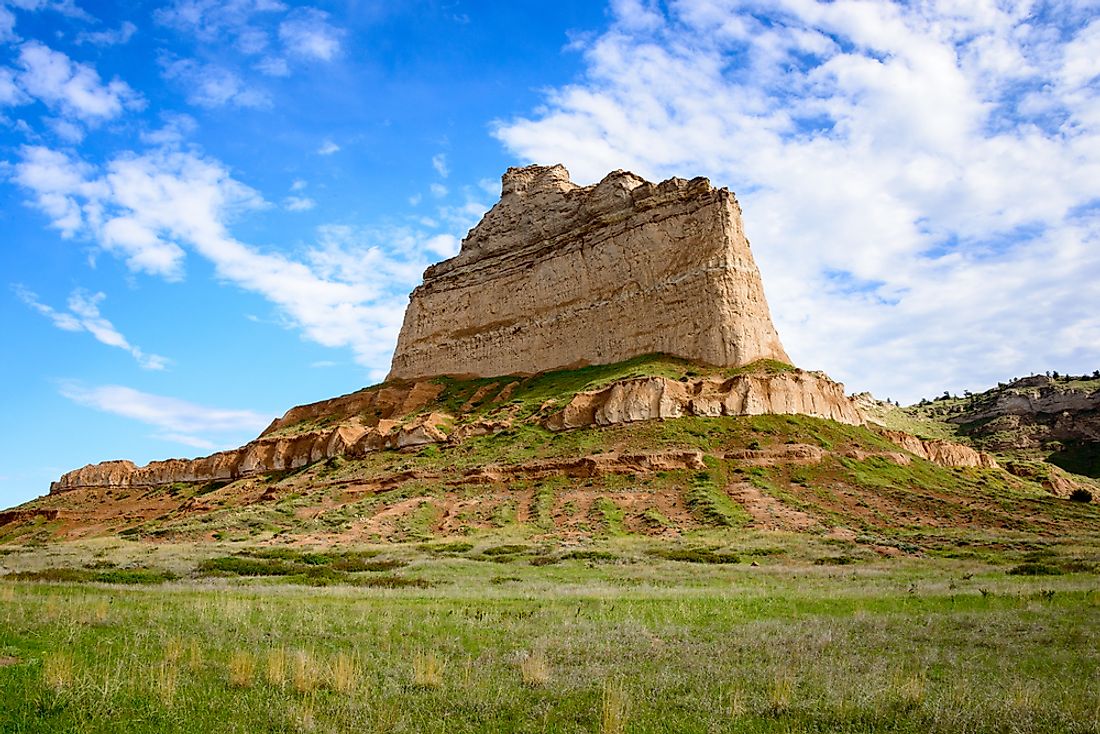Scotts Bluff National Monument - Unique Places in North America

The breathtaking Scotts Bluff National Monument is a scenic 19th-century tourist attraction located in Nebraska, US. It is beautifully adorned with bluffs which are uplands located on the southern part of the commonly known River Platte. The monument is named after the outstanding bluff—the Scotts Bluff—which towers 800 feet above all. The Scotts Bluff National Monument became officially recognized by the National Park Service in 1919 after several failed attempts which dated three years before. A county and a city located around the monument are named after the national monument.
Description
Prominent among the monumental features are the five rock protrusions known as Sentinel Rock, Saddle Rock, Eagle Rock, Dome Rock, and the eye-catching Crown Rock. The national monument entails two significant trails, the Oregon Trail and the Mormon Trail. Other smaller trails are the Oregon Trail Pathway, North Overlook Trail, South Overlook Trail, Saddle Rock Trail, and Bike Path. The development of Scotts Bluff took shape after Albert Mathers, the monument’s second custodian and the president of Gering Bank, started his service here. He instituted tables at the picnic area, and with the help of Scouts, he completed the Zig-Zag trail. He later built a pool at the picnic site. Development plans for Scotts Bluff took to speed after the arrival of Company 762 of the Civilian Conservation Corps in 1934.
Habitat
Scotts Bluff National Monument is endowed with numerous species of plants and animals. In fact, it is one of the few sites in the U.S where wildlife is protected in its native environment. There is an inventory of mammals, reptiles, amphibians, birds, and other invertebrates. In total, there are 28 mammals, 101 bird, 21 fish, 9 reptile, and 6 amphibian species at the park. As for plants, an astounding 250 plant subspecies cover the plain land and a few of the rock formations. The desert-like conditions allow the thriving of grasses and woodlands.
Uniqueness
An excellent tourist haven, Scotts Bluff National monument is magnificently adorned with summit trails in every part. These act as a major tourist attraction as they offer opportunities for outdoor leisure activities like nature walking and biking. The South Overlook Trail stretches 0.4 miles at the southern portion of the land and leads towards the summit’s parking lot. The Bike Path stretches approximately a mile from the Visitor Center and ends at the eastern part of Summit Park. Both hikers and non-hikers can use the trail. The Oregon Trail Pathway is slightly longer than the South Overlook Trail at only 0.5 miles starting from the display of Conestoga and ending in Mitchell Pass. The Saddle Rock Trail is the longest of the trails. In the past, visitors have been using this trail because it is steep. The trail starts at the Visitor Center and ends at Scott’s spring.
Tourism
Tourists from every corner of the world visit the Scotts Bluff National Monument to enjoy recreational activities. Being a hilly ground, most visiting tourists engage in activities such as hiking, biking, and walking. For hikers, the vista-like hills offer a stunning 360-degree view of the plain land below. Scotts Bluff National Monument has a historical heritage; famous for the fur traders, and the land was named after the renowned fur dealer Hiram Scott. The history behind the landform is another reason tourists want to visit the place.
Threats
The Scotts Bluff is surrounded by privately owned land that is mostly used for agriculture, a practice that restricts the animals from moving in and out of the monument area. Larger animals like the bighorn sheep, elk, grizzly bears, and bison that earlier resided in the monument area are now rarely spotted. There are several threatened species living in the area like the bald eagle and the whooping crane. The Peregrine falcon, swift fox, burrowing owl, black-footed ferret, and mountain plover are also some of the federally listed threatened species found here.











